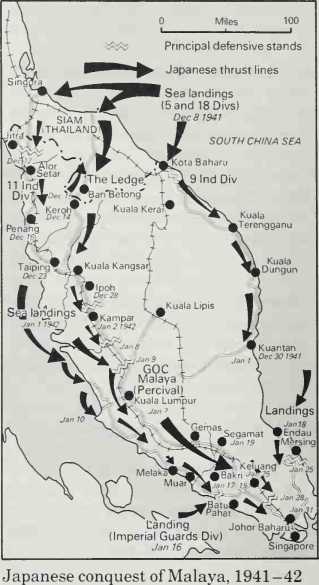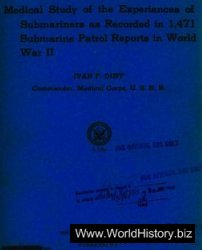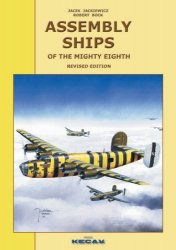Mahurin, Lt Col Walker M “Bud”
(b. l918). US. Fighter pilot with 24.75 victories. Most were scored while flying P-47s with the 56th Fighter Group in the European Theatre of Operations, 1943-44, hut he also destroyed a Japanese homher in the Southwest Pacific and 3.5 MiG-15s in Korea - a unique combination of victories among leading American “aces”.
Majo, Monte, Battle for (May 1113 1944). The key to the German Gustav Line defences in the south Liri valley, Monte Majo was taken by the French Expeditionary Corps (Juin) at the outset of Alexander’s “Diadem” offensive.
Makarios III, Archbishop Michael Mouskos (1913-77). Cypriot. Founding President of Republic of Cyprus 1960-77. See also
CYPRUS (1955—60).
Makarov, Adm Stepan Osipovich (1848-1904). Russian. During the Russo-Turkish War of 1877—78, Makarov had pioneered the use of torpedoes: his subsequent book on naval tactics was much admired by Togo, who ordered it translated for the use of Japanese officer cadets. He was both a scientist - designing a successful ice-breaker and a floating dock - and a fighting admiral: as commander of the Pacific Fleet at Port Arthur from March 1904, he personally led several sorties against the blockading Japanese. Returning from one such expedition on April 13 1904, his flagship Petropavlovsk struck a mine and sank with all hands, depriving Russia of her ablest commander. RO’N.
Makassar Straits, Battle of. In the
Early hours of January 24 1942, four American destroyers attacked Japanese shipping at anchor in the Makassar Straits, off Balikpapan, Borneo. Four transports, one cargo ship and a patrol vessel were sunk without American loss; but the Japanese invasion of the Dutch East Indies continued.
Makhno, Nestor Ivanovitch
(1889-1935). Ukrainian. Ran anarchist army which defeated Denikin and nearly defeated Trotsky during Russian Revolution.
Makin see Tarawa campaign.
Malan, Group Capt Adolph Gys-bert (“Sailor”) (1910-63). South African. Malan, an ex-merchant seaman, was one of the rap’s foremost fighter tacticians of World War II. He commanded No. 74 Squadron during the Battle of Britain and led fighter wings in 1941 and 1944. He is usually credited with 35 victories.
Malaya and Singapore (1941-42). Within hours of the attack at Pearl Harbor, the Japanese struck at the Philippines and Malaya in their drive for the strategic oilfields of Borneo and Sumatra. Malaya was also valued for its rubber and tin, and Singapore for its naval base and refineries. On December 8 1941, Twenty fifth Army (Yama-shita) landed unopposed in Southern Thailand and rapidly marched for the Malayan frontier, whilst “Takumi Force”, at brigade/ regimental strength, landed at Kota Bharu.
British empire forces in Malaya/ Singapore consisted of III Corps of two weak divisions in North and Central Malaya and 8th Australian Division in the South. “Singapore Fortress” had a small garrison but relied mainly on its heavy coastal batteries to deter attack from the sea. Reinforcements were on the way from England and Australia. Although there were sufficient military airfields, the aircraft operating from them were inadequate in numbers and per' formance, despite the insistent pleas of the c-in-c, Brooke-Popham, for modern interceptors and torpedo-bombers. Two capital ships. Prince of Wales and Repulse, arrived six days before the Japanese attack, but without the support of an aircraft carrier.
Brooke-Popham’s staff had correctly assessed the Japanese attack as coming overland and plans had been made for a preemptive advance (“Matador”) into Thailand up the Kroh-Pattani road, but this was not sanctioned by Whitehall until too late. The highly professional Japanese set about the undertrained (mostly Indian) troops opposing them, whose units had lost their best men as reinforcements for the Western Desert campaign. Within three days the defenders were in full flight and their attackers gave them no respite until they had

Been driven off the Malayan Peninsula and onto Singapore Island. The British land forces commander, Lt Gen Percival, was outflanked every time he attempted to make a stand on the west side of the central mountain range, with a series of seaborne landings by the elite Imperial Guards Division. Inland, Japanese infantry showed considerable resource when moving off the roads to which the defenders were tied.
Morale had been affected at the outset by the loss, on December 10, of the two British capital ships. The southernmost Malay state of Johore, where Percival had planned to make a stand, was lost at the end of January when 9th Indian Division was routed and its commander killed, and the Australian 8th Division dispersed after a gallant fight at Muar and Bakri.




 World History
World History









